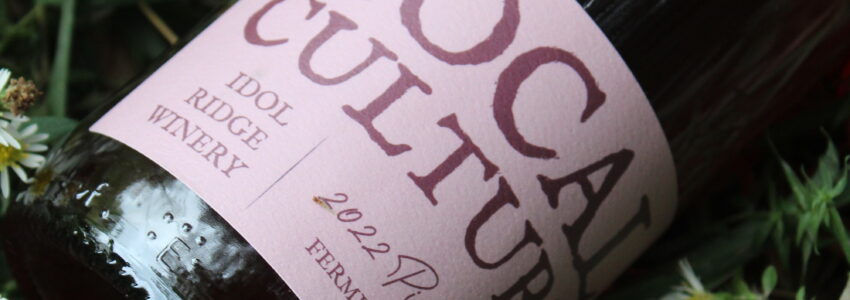Ferment to be Wild – Local Culture 2022 Pinot Noir

The inspiration behind the series from our Winemaker.
Pinot Noir used to freak me out. When properly executed it can be hauntingly great, but it’s notoriously easy to break. It’s hard to imagine not being intimidated by it. I certainly was. For
most of my career, I’d approach it with white knuckles — putting more attention into not messing it up than letting it shine. Looking to intervene as soon as it did anything that made me slightly uncomfortable. It made for wine that was technically-sound, but tight-fisted and slow to open up.
Over the years since our previous vintage of Pinot Noir, we’ve changed our mindset around winemaking. Instead of bending and shaping grapes into the wines that we want them to be, we’re trying to be better listeners. Getting in tune with them every step of the way and softening our inputs with the hope of helping them become what they’d want to be if we let them.
Heading into the 2022 harvest, it didn’t look like we were going to be able to source any red vinifera fruit. Yields were down across the region and no matter how much asking around we did, it wasn’t looking good. In September, some beautiful Seneca Lake Pinot Noir became available, and we jumped at the chance to work with it. With no destination in mind, we set out to find out who it wanted to be and help it find its way there.
Fermentation was completed via both commercial and indigenous yeasts (separate vessels that were blended together post-pressing), and that was done for a few reasons. First, it provided an opportunity to evaluate these strategies beside each other. Second, it built an escape hatch into the process — if things got really strange on the low intervention lot, it’d allow us to keep things separate and buy some time and space to figure it out without jeopardizing the bottom line. Low intervention winemaking is still new territory for us, so sometimes it’s a good idea to build a safety net where we can. In this case, no safety net was necessary.
Post-pressing, the wine showed us such a lively, fruit-focused profile that it seemed silly to try and do anything but emphasize it. We opted to preserve freshness by inhibiting malolactic fermentation and aging exclusively in stainless steel. No fining or filtration was employed.
Juicy, complex, and joyful, this Pinot Noir knows who it is but doesn’t take itself too seriously. Guided with deference to its preferred way of being, it’s the kind of wine that validates our new approach in the cellar. Pinot Noir used to freak me out; this one helped teach me the value of going with the flow.
